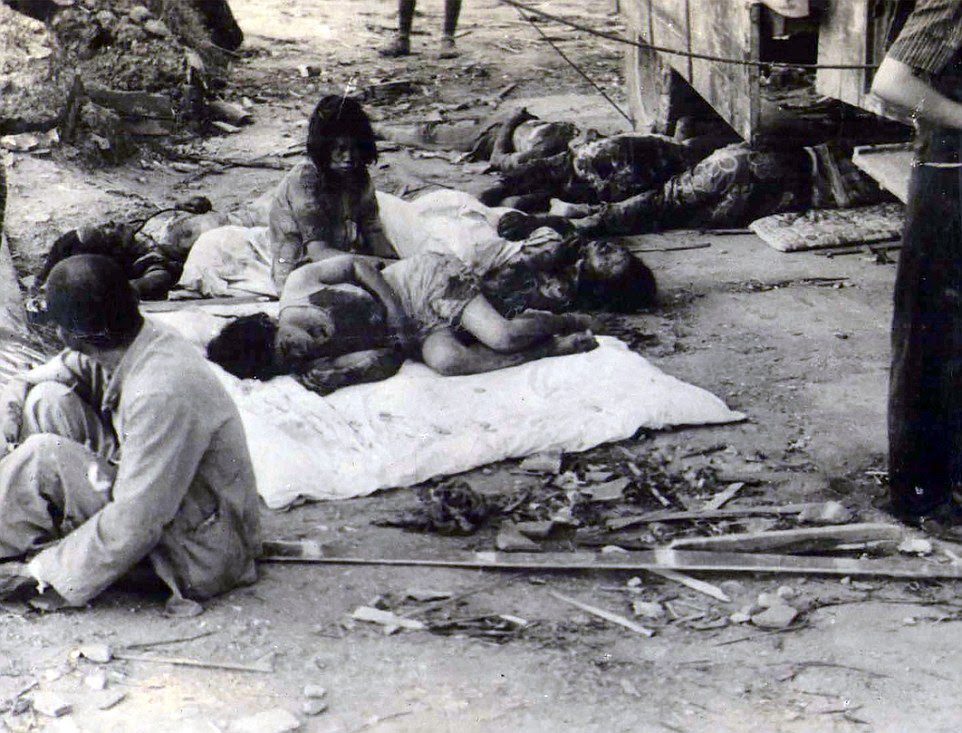It is an irony that those at the helm of affairs feign ignorance of the humanitarian impact of nuclear weapons. Recent statements of the US administration to modernise their nuclear weapons programme are a serious issue for mankind to ponder over. The US decision to break the treaty with Iran has dangerous connotations. But the world cannot be allowed to be ruled by the military-industrial complex. An analysis, for Different Truths.
It is perplexing to know that the main entrance gate of UN office in Geneva is called the Broken Chair Gate. Only when one sees with own eyes a large broken chair on the Palais des Nations in Geneva that one comes to understand its significance. The monumental sculpture made by Swiss artist Daniel Berset was erected by Handicap International in front of the main entrance of the UN building on 18th August 1997. This powerful structure of the chair has three complete legs while the fourth leg is splintered. This broken leg symbolizes devastating effect of the landmine on human beings. This is one of the best artistic works of the last century, which reminds us of the misery caused by violent conflicts. It is, in fact, a symbolic representation of human sufferings that signify the futility of war.
In the event of violence of any kind health is always the biggest victim. Female foeticide, an unlawful gender insensitive practice, not only kills the female baby yet to be born but also affects the physical and mental health of the mother. During caste or ethnic conflicts or communal riots, the damage caused is at the societal level. In such situations in addition to the loss of life and physical injury, there is large scale fear among the people who end up in stress-related diseases including the post-traumatic disorder, which has a long-term impact on the person’s health! These symptoms are compounded when the population has to migrate and live in refugee camps in most uncertain and unhygienic conditions with no family privacy. They get flashbacks, and nightmares; develop emotional numbness and avoidance of places, people, and activities that are reminders of the trauma; they also develop sleep disturbance, irritability, and anger. In children, there may be frightening dreams without recognizable content. Rape and murder of minors, like in the case of Asifa, have a very serious effect on the minds of children, who then start avoiding going to lonely places and become fearful of an unknown person.
To quote a few examples, the communal riots in Muzaffar Nagar in 2013, the carnage in Gujarat in 2002, terrorist violence in Punjab, riots against a particular community in 1984 and exodus of a particular community from Kashmir valley bear the evidence. In these situations, there is an element of mass fear and a feeling of being let down, which many times leads to a revengeful attitude.
Larger conflicts like the events in Syria, Palestine or skirmishes at the Indo-Pakistan border result into the physical injury of security forces as well as the civilians. The image of a dead unknown Syrian child on the seashore while trying to escape the violence pushes one into the extreme gloom. During the Indo Pak war of 1965, India lost 2,862 soldiers, while 5,800 Pakistani soldiers lost their lives. During the 1971 conflict, nearly three lakh people were killed in Bangladesh by the ruling Pakistani army. The generations thereafter continue to remember the days of genocide.
During World War II, 5.5 crore people were killed and about 9.5 crore people injured and destituted. A visit to the Nazi concentration camps shows total disrespect to human life. It is difficult to believe how in the lust for gold, one could remove the teeth of prisoners with golden capping.
With the nuclear weapons, the whole war scenario has become much worse and dangerous. Use of atomic bombs on human population in Hiroshima and Nagasaki in Japan on 6th and 9th August 1945 respectively left over 2,00,000 people dead. Radiation effects continue to impact generations with cancer and malformed births. The present generation of nuclear weapons is much more deadly. Studies indicate that even a limited nuclear conflict involving 100 Hiroshima size nuclear weapons would put over two billion people at risk. A larger conflict involving the major nuclear-armed states would threaten the very existence of mankind.
It is an irony that those at the helm of affairs feign ignorance of the humanitarian impact of nuclear weapons. Recent statements of the US administration to modernise their nuclear weapons programme are a serious issue for mankind to ponder over. The US decision to break the treaty with Iran has dangerous connotations.
But the world cannot be allowed to be ruled by the military-industrial complex. The decision of the North Korean government to suspend nuclear weapons programme is a welcome step. The adoption of Treaty Prohibiting Nuclear Weapons (TPNW) as a result of united people’s movements, on the initiative of International Physicians for the Prevention of Nuclear War (IPPNW), in the form of International Campaign to Abolish Nuclear Weapons (ICAN) is a big hope. It is time that the nuclear weapons states join the treaty and save humanity from the threat of extinction. Civil society has to come forward and the medical professionals who owe a special responsibility to health have to be proactive and speak up.
Dr. Arun Mitra
©IPA Service
Photo from the Internet





 By
By
 By
By
 By
By